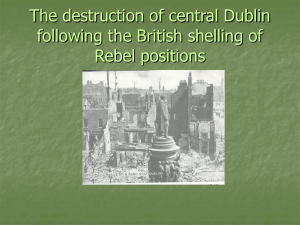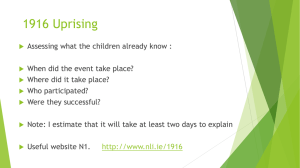THE EASTER RISING 1916
advertisement
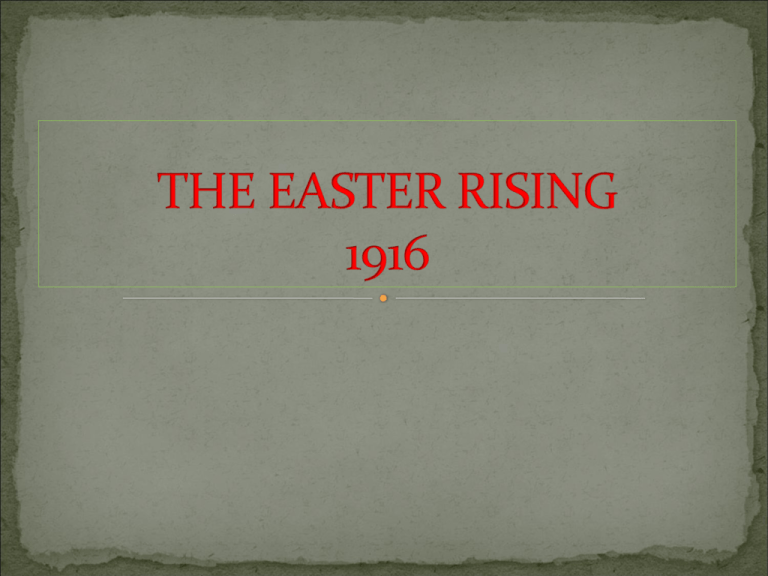
Britain ruled Ireland at the time however the Irish did not like this. People believed that Ireland should make their own laws The only way for to this to happen was to rebel against the British. . Who were the leaders? The Irish volunteers were the main people involved in the rising. They were a group of men who were against the British. They wanted them out of Ireland The Irish Citizen Army were another group of men with the same beliefs. Their leader was James Connolly. There were seven main leaders involved in the Rising. They joined together to form a secret rebellion against the British in Dublin. Padraig Pearse •Born in Dublin in 1879. •Supported Irish culture. •Joined Irish Volunteers and IRB. •Poet and Writer. •School Teacher/Barrister. Thomas Clarke •Born on the Isle of Wight •57-Oldest of the leaders. •Owned a small shop on Parnell street The Irish volunteers would have their secret meetings there. James Connolly •Born in Scotland, 1868 •Leader of the Irish Citizen Army •Prominent figure in the trade union movement Tomas McDonagh Born Co. Tipperary 1878 Sean Mac Diarmaid Born Co. Leitrim 1883 Born: Co. Galway 1881 Born: Dublin 1887 How did they Rising come about? On the morning of Easter Monday 1916, about 1,000 men from the Irish Volunteers and the Irish Citizen Army marched through Dublin and took control of some important buildings. They were armed with weapons, ready for battle against the British. Their headquarters were in the GPO, on Sackville Street, which is now known as O’Connell Street. Some of the leaders were stationed in other places around Dublin City, such as Stephen’s Green. Padraig Pearse then read the Proclamation on the steps of the GPO. This statement declared that Ireland was a Republic, which meant that it was no longer under British Rule. They removed the British flag and flew their own flag. This statement was signed by all seven leaders. The British were taken by surprise but by Tuesday morning they had begun to fight back. A battle broke out in Dublin. Over the next few days the fighting continued and there was severe damage done to the city and many people died. Most of the main buildings in Dublin had been burned down or destroyed in the battle and many innocent Dublin citizens were killed. A lot of the people were not happy with this rebellion as their city was been ruined. It finally ended after 6 days. The rebels decided to surrender as the city was in ruins. The British then ordered all of the seven leaders to be executed. They were killed in Kilmainham Jail in Dublin. The GPO Dublin left in ruins Kilmainham Gaol The leaders were shot here after the Rising.

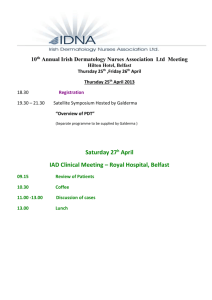
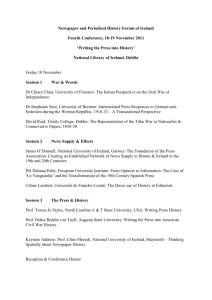
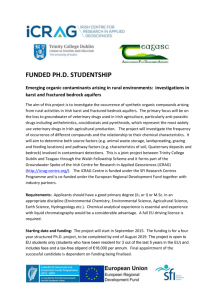
![South east presentation resources [pdf, 7.8MB]](http://s2.studylib.net/store/data/005225551_1-572ef1fc8a3b867845768d2e9683ea31-300x300.png)
